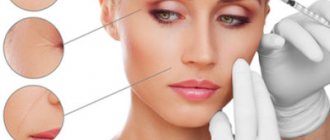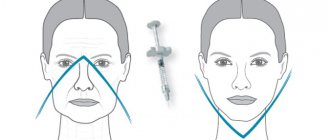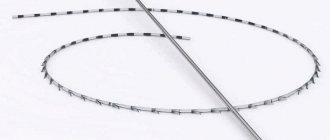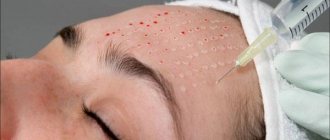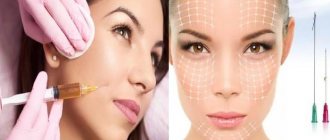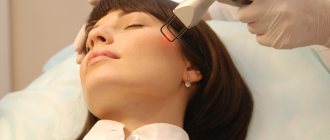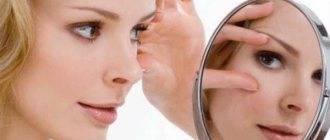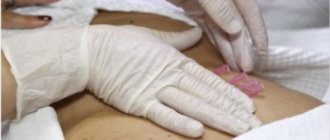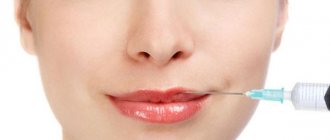Many people have had time to get acquainted with lifting procedures. Various tissue tightening techniques can remove defects and age-related changes. Patients of cosmetology clinics have managed to get used to the possibility of forming an oval shape, cheeks, and chin. Many people don’t even think about the fact that lip lifting exists. There are different ways to perform modeling of the oral zone. You can tighten the contours of your lips at the same time as increasing their volume by performing thread lifting. The procedure involves installing the thinnest mesothreads along the borders of the mouth.
What it is
A contour facelift with threads is considered an understandable process. The use of this technique for lip correction is unfamiliar to many. The cosmetologist acts in a similar way: the thinnest absorbable material is inserted along the contours of the mouth using a blunt cannula. Tissue trauma is minimal. Rehabilitation is fast. As a result, contours become distinct, wrinkles are tightened, and ptosis disappears.
The biodegradable substance of the implanted material gradually dissolves, and the remains are eliminated naturally. The process affects the acceleration of metabolism, stimulation of the production of own collagen and elastin. In place of the collapsing artificial material, fibrous fibers are formed that maintain the effect of fullness of the lips.
Important point! The oral area, given the small size of the area and the smaller volume of tissue, tends to retain the lifting effect for a longer time after a tightening. Lips, unlike cheeks, chin, eyelids, retain a juicy, attractive appearance longer.
The essence of the procedure
A gold thread lift can be used both for facial rejuvenation and for correction of other areas - neck, décolleté, arms, inner thighs. In this case, threads made of gold of the highest standard are used, wound on a biodegradable suture thread. Gold threads are inserted under the skin along certain lines. After some time, the polymer thread dissolves, but the gold threads remain. During this period, a connective tissue frame is formed around them, which will continue to perform the function of skin tightening.
Efficiency of use
By introducing mesothreads it will be possible to emphasize the blurred boundaries of the mouth. The border will become more pronounced. Lips, even without makeup, will stand out on your face. The mouth will become catchy and attractive.
Thread lifting of the oral area will add volume to the tissues. The process of improving fullness occurs naturally. Lips look natural and there is no feeling of being overfilled with fillers.
During the operation, a cosmetologist is able to eliminate some defects: asymmetry, drooping corners, wrinkles above the lip. Your mouth will look younger. Improving the expression of the lips will change the visual perception of the face.
Preparing for surgery
The procedure for thread lifting of the oral zone is preceded by a preliminary consultation with a cosmetologist. The doctor verifies the need for manipulation and collects anamnesis to identify possible contraindications. If the decision is positive, the cosmetologist sets a day for the manipulation and gives recommendations on preparing for the session.
The patient is required to remain healthy. A week before surgery, avoid taking medications that affect blood quality. It is recommended to give up alcohol and smoking. It is advisable to lead a full healthy lifestyle. If you are prone to swelling and bruising, additional measures are taken to prevent their formation during thread lifting of the oral area.
Carrying out the procedure
On the day of the threadlift surgery, the patient is seated in a cosmetology chair. Before manipulation, the skin must be cleaned and disinfected with an antiseptic. The manipulation is quite painful and will require anesthesia. Local application or injection method of pain relief is used.
Taking into account the individual characteristics of the patient, the cosmetologist performs miniature punctures. Using a cannula, the doctor introduces the material according to a pre-planned pattern. Technology, number of guides is determined individually. The technique of manipulating a blunt cannula allows maintaining tissue integrity. The fibers are pulled apart rather than cut.
After introducing the material, the cosmetologist tightens it to the desired state. The doctor trims the free edges of the threads. The surface of the skin is treated with an antiseptic. For severe swelling and bruising, apply a cooling compress. If necessary, use a wound healing agent.
To prevent complications, it is recommended to take a balanced approach to choosing a clinic or doctor. The operation is considered a simplified version of plastic surgery and requires a highly qualified cosmetologist. It is important to maintain sterility during the exposure process. The work is carried out using fresh material from newly opened packaging. The patient is advised to closely monitor the actions of the cosmetologist. If necessary, additionally monitor the doctor.
The procedure lasts 20–40 minutes. Upon completion of the manipulation, the cosmetologist gives recommendations to speed up recovery and releases the patient. A follow-up examination is scheduled after 1–2 weeks.
Healing period
The oral zone threadlifting technique does not imply serious negative changes in appearance. Local redness of the area, bruising, and swelling are possible. The specificity of the zone is such that a temporary postoperative increase in tissue volume often becomes a plus rather than a minus.
It is important to properly care for damaged skin. Be sure to carefully cleanse and be careful when eating. The doctor will recommend periodic treatment of the area with an antiseptic and the use of a regenerating cream.
For a successful recovery, for 7–14 days, avoid:
- various influences in the operated area (touching, rubbing, kissing);
- visits to the pool, open water;
- warming up tissues (steaming in a bathhouse, sauna, hot water);
- sleeping on your stomach;
- use of cosmetics in the operated area;
- exposure to ultraviolet radiation (solarium, sun);
- any cosmetic interventions;
- increased physical activity.
In the first days, it is advisable to avoid visiting public places and, if possible, avoid being on the street.
Attention! It is recommended to control facial activity. Muscle movement is usually reflected in pain and reduces the quality of recovery.
In agreement with the cosmetologist, after 1–2 weeks, the restrictions are gradually relaxed. At this time, you will be able to evaluate your first achievements. After 3–12 months, the threads will dissolve. In place of the artificial material, natural fibrous fibers are formed, strengthening and modeling the lips. The visible results will last for 1–3 years. The effect gradually disappears. After regression of achievements, it is permissible to repeat the operation.
Cost of manipulation
The lip lifting procedure with threads is carried out by cosmetologists in clinics, beauty salons, and privately. When choosing a specialist, it is recommended to be guided not by the price of the manipulation, but by the education and experience of the doctor. It’s good if a cosmetologist is recommended by friends, there is an opportunity to evaluate the real result of the specialist’s work. The cost of thread lifting of the oral zone may vary depending on the materials used, their quantity, and the price of the doctor’s services. You usually have to pay at least 3-5 thousand rubles for the service.
Indications
Almost the same for fillers and mesothreads:
- nasolabial folds, labiomental wrinkles;
- vertical and horizontal wrinkles;
- nasolacrimal groove;
- “purse-string” wrinkles around the lips;
- folds in front and behind the auricle;
- gravitational ptosis of the cheeks;
- eyebrow ptosis;
- folds of skin on the chin, neck, chest;
- sagging tissue on the buttocks, abdomen, arms, legs. (Due to the fairly high price, fillers are usually used in the face and décolleté areas; using threads on the body is cheaper).
- uneven relief of the skin and subcutaneous tissues after liposuction. (Both threads and fillers can be used, but the result from threads is brighter).
Contraindications
Thread lifting of the mouth area is performed on patients in good health. Any manifestation of the disease is excluded: an increase in temperature, a sharp change in pressure, the occurrence of inflammatory processes.
If you feel unsatisfactory, it is recommended to reschedule the procedure. You will have to completely abandon the procedure if:
- significant endocrine disorders, heart and vascular diseases;
- diagnosing malignant neoplasms;
- problems with blood clotting and tissue regeneration.
It is recommended to avoid surgery during pregnancy and lactation. The manipulation will have to be postponed if dermatological disorders or exacerbation of herpes are detected. Doctors do not recommend performing the procedure during menstruation.
What are the contraindications?
There are a number of contraindications, the presence of which prohibits the use of this facial rejuvenation technique. Among them are:
- pregnancy and lactation;
- allergic reaction to anesthesia or components of suture material;
- diseases of the blood (clotting disorders) and blood vessels;
- diabetes;
- presence of cancer and autoimmune diseases;
- acute viral infections;
- inflammation;
- pronounced ptosis (drooping) of tissues;
- inflated patient expectations.
In all other cases, if there are indications, you can safely carry out the procedure.
Consequences
Undesirable consequences when following the technological process of the operation are rare. To avoid side effects, it is recommended to carefully choose a cosmetologist and strictly follow all the doctor’s instructions. In some cases, the following may appear:
- asymmetry;
- uneven skin;
- translucent material;
- functional disorders (swallowing, chewing food).
Negative consequences are observed in the case of doctor errors, non-compliance with the rules of behavior by the patient, and individual reactions of the body. If sterility is violated, an inflammatory process may develop and scars may form on the surface of the skin.
The occurrence of redness, local hemorrhages, and swelling is considered a natural reaction to the intervention. Symptoms disappear in 2–5 days. If symptoms persist for a longer period, additional consultation with a doctor is required. Many patients complain of pain in the places where the threads are installed. The duration of the symptom persistence depends on the individual pain threshold.
The essence of the gold reinforcement procedure and its side effects
The threads are introduced along certain lines, or along the contours of wrinkles, or the threads intersect, forming a “golden frame”, which serves to correct fine wrinkles and increase the elasticity of the skin in general. The puncture sites are fixed with adhesive tape. The rejuvenating effect after reinforcement with gold threads begins to appear after 2 months and reaches a maximum after about 6 months due to the formation of its own “framework” of collagen and elastin around the thread.
But such a wonderful rejuvenation procedure without surgery also has some disadvantages:
- Metal inside the skin, even if it is precious, is still a foreign body and is a contraindication for hardware and laser cosmetology.
- Some fragments of threads “broken” by muscles are often visible on the skin
- The thinnest threads located superficially are not able to have a tightening and strengthening effect on the skin. The effect of tissue strengthening is achieved only due to fibrous formations along the insertion of the threads.
- The threads can become translucent when visiting a sauna or bathhouse when the metal is heated.
Today we can confidently state that the “gold rush” that we experienced several years ago has now practically disappeared. Practice shows: gold threads have many more disadvantages than advantages.
Advantages and disadvantages
Cosmetologists and patients value thread lifting of the mouth for:
- naturalness of the result;
- easy tolerability of the procedure;
- no serious complications;
- minimal possibility of allergies;
- speed of surgery and rehabilitation;
- long lasting effect.
The disadvantages of the technique are:
- impossibility of significant increase in volume;
- the need for a highly qualified doctor;
- the possibility of long-term persistence of pain;
- the need for long-term restrictions on facial expressions.
Important point! Classic surgical plastic surgery in the oral area is rarely performed, so fibrous formations under the skin of the lips are considered to be a conditional disadvantage of the procedure.
Use of anesthesia
Thread lifting is performed under local anesthesia. If barbed threads are used, infiltration anesthesia of the area may be required. In this case, dental painkillers are first injected into the area of intended correction. When lifting with smooth threads (for example, mesothreads), a special anesthetic cream is applied to the surface of the correction area.
Minor pain may occur after the anesthesia wears off, but this pain is quite tolerable. Patients with a low sensitivity threshold are recommended to take painkillers in the first few days.
Comparison with similar interventions
Various techniques are used to rejuvenate lips. A cosmetologist will help you choose an option. During the correction, it is important to correctly solve existing problems and prevent the rapid return of deficiencies. Cosmetologists often offer the following methods:
- contour plastic;
- injection therapy (Botox, biorevitalization, gel injection);
- threadlifting;
- hardware influences;
- peelings.
For young patients, it is recommended to limit themselves to injection correction. The drug and method of exposure are selected individually. The technique will allow you to change your appearance without interfering with natural processes. For older patients, it is not enough to disguise the problem by embellishing the appearance. With the help of hardware or thread lifting, it will be possible to lift the upper lip, remove wrinkles, and lift the corners of the mouth.
IN
In pursuit of youth, most women resort to operations such as a facelift or blepharoplasty, but at the same time they forget about such an important point as the lips and perioral area, which require no less close attention than the rest of the face.
But before we delve into the description of methods and modern approaches to oral rejuvenation, in our opinion, it is necessary to determine its main anatomical components.
Rice. 1. Anatomy of the mouth and perioral area:
1 - skin part of the upper lip; 2 — column of the philtrum (two vertical ridges above the upper lip); 3 - groove of the philtrum; 4 - cupid's bow; 5 - white lip roll - a thin strip of light skin surrounding the red border of the lips on the outside; 6 - tubercle; 7 - commissure - the junction of the lips in the corners of the mouth; 8 - vermillion (red border of lips).
Rice. 2. Muscles surrounding the oral area
The orbicularis oris muscle is formed by muscle bundles located in the thickness of the lips. It begins in the area of the corners of the mouth, where its fibers are woven into the skin at the commissure and surround the lips in the form of a sphincter. The function of this muscle is to close the mouth and pull the lips forward.
The muscle that depresses the angle of the mouth or DAO (Musсulus Depressor Anguli Oris) originates and attaches to the bony edge of the lower jaw, ending in the skin of the commissure of the lips.
The subcutaneous muscle of the neck (M. platizma) covers the entire anterior surface of the neck with a uniform thin layer. M. platizma starts from the clavicle area, is woven into the superficial tissues of the cheek area and at the level of the corner of the mouth (its lateral bundles Lateral Platisma - LP). M. platizma can act as a strong depressor of the lower lip. In some people with well-developed subcutaneous neck muscles, this part of the muscle (LP) may be visible during active movements during chewing, swallowing, and while talking.
It is important to distinguish between the action of the DAO, which pulls the corner of the mouth downwards (Fig. 3a) (vertical traction), and the action of the LP, whose fibers pull the corner of the mouth posteriorly and downwards (posterior oblique traction) (Fig. 3a). Their action is complemented by contraction of the muscle that lowers the lower lip (m. depressor labii inferioris “DLI”). The motor innervation of the DAO comes from the marginal branch of the mandibular nerve (marginalis mandibulae nervus MMN), which projects to the region of the marionette fold (Fig. 2).
Rice.
3. a — action of the DAO muscle; b - action of the lateral part of the platysma (LP) Signs of a young mouth
Signs of a young mouth that the plastic surgeon takes into account when planning and performing anti-aging operations.
Rice. 4. a - schematic representation of a young mouth; b - photo of a young mouth; c - photo of a young mouth smiling
1. Slightly exposed upper teeth. 2. The lower teeth are completely covered by the lower lip. 3. The corners of the mouth are slightly raised. 4. The skin of the upper and lower lips is smooth without vertical wrinkles. 5. Lips are quite full. 6. A clear white lip roll is a thin strip of light skin surrounding the outside of the red border of the lips or the contour of the lips. 7. The grooves of the philtrum are clearly visible - two vertical ridges above the upper lip. 8. The shape of the edges of the lips with artistically expressed anatomical curves. 9. With a harmonious smile, 2/3 of the upper teeth are exposed. The lower lip only slightly exposes the lower teeth.
Signs of an Aging Mouth
Rice. 5. Photo of the mouth of an elderly person: a) with closed lips; b) mouth slightly open
1. The upper lip becomes disproportionately long and completely covers the upper incisors, the red border turns inward and visually decreases. 2. The lower teeth are exposed (Fig. 5, b) when the lips are opened. 3. Gradual drooping of the corners of the lips under the action of the muscle of the same name (DAO) and the appearance of furrows in the corners of the mouth (marionette lines). 4. A fine network of vertical wrinkles appears around the mouth (“purse-string wrinkles”). 5. Lips lose their original volume and become thinner. 6. A clear outline or the so-called white roller disappears. 7. Elongation and flattening of the filtrum occurs. All these signs are associated with loss of elasticity and thinning of the skin, atrophy of the subcutaneous fatty tissue, decreased elasticity of the fibers of the orbicularis oris muscle and the depressor anguli oris muscle, partial resorption of the bones of the facial skull, alveolar processes of the jaws, and malocclusion due to loss of teeth.
Based on the above listed signs, the principles of mouth rejuvenation are determined.
Principles of Oral Rejuvenation
1. It is necessary to raise the mouth as much as possible (oral lifting) in order to cover the lower incisors (midface lift, impact on the mentalis muscle - mentopexy, resection of the muscle that depresses the lower lip, DAO resection, lifting the oral mucosa).
2. Smooth out purse-string wrinkles and even out the skin texture around the mouth (mesotherapy, biorevitalization, peeling, laser resurfacing, Botox injections, filling wrinkles with gel or your own fat).
3. Emphasize the artistic contour of the lips - white rollers (use of gels based on hyaluronic acid, lipofilling of the lip contour, introduction of threads - GORE-TEX or AlloDerm collagen thread, installation of Permalip silicone lip implants, etc.)
4. Restore the volume and elasticity of the lips lost with age (it is very important not to overdo it). It is necessary to ensure that the dynamics of the mouth do not change and at the same time the individuality of each smile is preserved. There should be no distortion of the smile area (for example, the use of fillers or large amounts of fat). Bring to balance the ratio of the upper and lower lips in volume to 1:1.6.
5. Avoid external incisions on the lips, as the resulting scars may subsequently be noticeable and will give the lips an unnatural appearance.
Now let's look at each of the points in more detail.
1. Mouth lift (Stomopexy)
The most famous author of methods for rejuvenating the mouth and perioral area is the American plastic surgeon Dr. W. Little. He was the first to propose performing a mouth lift procedure through small incisions in the mucous membrane. The author called this operation stomopexy. The concept of “stomopexy” includes a whole range of methods, the choice and scope of which depends on the severity of age-related changes in the oral area.
I - Deep midline lifting (SMAS-plasty) leads to raising the corners of the mouth and smoothing the jowls by shortening a group of muscles called modiolus. However, with a vertical rhytidectomy (lifting only the skin of the midface without SMAS), the corners of the mouth are only partially lifted. With any type of facelift, lifting the oral cavity is achieved indirectly.
II - Impact on the mental muscle (mentopexy): Dr. W. Little releases the collection muscle at the base and at the same time lifts the soft tissue block using a special thread passed through a small incision in the oral mucosa in the area of the lower incisors. After this procedure, the contour of the chin is improved, which (instead of the characteristic senile and pointed chin) becomes more rounded. The lower lip moves to a higher position, which allows you to cover the lower teeth, which are already visible with age.
III - Resection (release) of the muscle that depresses the lower lip (DLI-release): during lifting of the chin, the detachment can be extended in any direction. This releases the muscle that lowers the lower lip (m. depressor labii inferioris). This maneuver was first proposed by French plastic surgeon Christian Marinetti in 1999.
IV – Lifting of the oral mucosa: Dr. Little typically excises a narrow triangle of oral mucosa above and just lateral to the corner of the mouth. When stitching the triangle, the corners of the mouth rise slightly. The small scars that remain after this procedure are located inside the mouth on the mucous membrane and only a dentist can notice them upon careful examination. All incisions are sutured with a thin absorbable thread.
V - Auxiliary suture for the commissure of the mouth: passes in the form of a loop in the subcutaneous layer and is attached to the deep dense tissues at the base of the nostril of the corresponding side of the mouth. For this, a special non-absorbable thread (tissulift) is used. This procedure is rarely used (according to the author, in less than 5% of cases).
VI - Resection of DAO (m. Depressor Anguli Oris - muscle that lowers the corners of the mouth) is performed to adequately raise the corners of the mouth. Dr. Little combines a facelift with transection of the depressor anguli oris muscle in almost all of its patients. The DAO resection procedure was first described by French plastic surgeon Claude LeLouarn.
How is the DAO resection procedure performed?
Preoperative markings are performed with the patient in an upright position. The projection of the muscle depressing the corners of the mouth is 1 cm lateral (outward) and 1 cm below the commissure of the angle of the mouth. A horizontal line is drawn in the upper quarter of the puppet's fold parallel to the lower lip. Under local anesthesia, an injection needle is inserted percutaneously and the future incision is marked on the buccal mucosa (Fig. 6).
Rice. 6. Scheme of preoperative marking of the operation “resection of DAO”.
A special instrument is used to move the horizontal fibers of the buccal muscle apart.
Then we reach the deeper vertical fibers of DAO.
At this stage it is important to see the lateral (outer) edge of the DAO. The muscle is isolated and, under visual control, divided to the level of subcutaneous fat. Several absorbable sutures are placed on the mucosa.
At the end of the procedure, it is very important to fill the area of retraction formed after muscle separation with your own fat. Dr. Little showed that a single resection of the DAO during a facelift produces durable long-term results.
Rice. 7. DAO resection with lipofilling (photo of patient A., 56 years old)
This is not a public offer! There are contraindications. Before use, consultation with a specialist is required.
Rice. 8. DAO resection with lipofilling (photo of patient B., 32 years old, “before and after” at rest) – the corners of the mouth after the operation are involuntarily slightly raised.
This is not a public offer! There are contraindications. Before use, consultation with a specialist is required.
Rice. 9. Photo of patient B. with muscle tension: “before” - the corners of the mouth are lowered; “after” DAO resection – the patient is unable to voluntarily lower the corners of her mouth (the chin muscles remain intact).
This is not a public offer! There are contraindications. Before use, consultation with a specialist is required.
2. Improving the relief and structure of the skin around the mouth
In order to improve the condition of the skin around the mouth and remove fine wrinkles, it is necessary to use various cosmetic techniques. You can improve the condition of the skin around the lips in various ways, and only a competent cosmetologist will be able to choose exactly the technique that is most effective in each specific case.
A . Biorevitalization and mesotherapy will help qualitatively improve the condition of the skin around the mouth. Both of these techniques have a deep and long-lasting moisturizing effect. As a result, the skin is smoothed, filled with moisture, becomes velvety and acquires a healthy color. Both methods are aimed at rejuvenating the skin: increasing turgor and elasticity, smoothing out fine wrinkles, as well as moisturizing. Biorevitalization involves the use of low concentration hyaluronic acid and gives an instant, but less lasting saturation effect. The result of mesotherapy cocktails containing vitamins, microelements, collagen, elastin, coenzymes, etc. manifests itself more slowly, but produces more lasting changes, also preventing skin aging.
B. Peels and Botox are aimed at smoothing the skin texture and smoothing out wrinkles. Any peelings (physical (laser or mechanical polishing) and chemical (glycolic, retinol and many others)) significantly affect the condition of the skin around the mouth: they increase blood supply, stimulate cell renewal and, thereby, even out the relief, resulting in smoothing out fine wrinkles, deep wrinkles will become almost invisible, and new purse-string wrinkles will not appear for a long time. After peeling, the skin will look even, smooth, and young. Botox injections, by blocking nerve endings and excluding some groups of facial muscles from active facial expressions, will also help smooth out purse-string wrinkles above the upper lip and lift the corners of the mouth.
B. Contour plastic surgery of lips and deep wrinkles. To obtain a more vibrant effect, it is necessary to fill the lips, which over time lose their youthful plumpness. This can be done using hyaluronic acid fillers or lipofilling. (These techniques will be described in more detail below).
3. Lip contour correction
To make lips look more expressive, American plastic surgeons have proposed the “Parisian lips” procedure. Its essence lies in the fact that it is necessary to emphasize the contour or white ridge of the lips, which flattens with age and loses its expressiveness. You can strengthen the lip contour using fillers based on hyaluronic acid (Uvederm ultra, Restylane, Sugiderm, etc.). The gel is injected into the problem area, taking into account the patient’s wishes. Some people prefer to enhance the cupid's bow area, while others want to highlight the sides of the upper lip. In certain cases, amplification of the filtrum columns is indicated. At the same time, the natural contour of the lips is recreated, their natural youth is restored. Unfortunately, the procedure will need to be repeated once a year.
To create an even and clear contour of the lips, in addition to injection methods, you can also use surgical correction methods: in particular, synthetic GORE-TEX thread or collagen thread - AlloDerm. Threading provides lasting long-term results. For example, the AlloDerm thread is replaced by its own collagen over several months without loss of volume. In recent years, the Permalip silicone implant has been widely used in the United States to restore lip contour and volume.
4. Restoring lip volume
Rice. 10. Scheme of lip lipofilling (explanation in the text)
In addition to smoothing the contour, with age the lips lose their original volume and become thinner. Restoring lip volume can be done using gels based on hyaluronic acid or lipofilling. Lip contouring with hyaluronic acid gives an immediate enlargement effect, but is not very durable - for a maximum of 1 year. Injections of your own fat for lip augmentation and smoothing of deep wrinkles are characterized by 2-3 weeks of postoperative swelling, but, at the same time, a more natural shape, consistency, beautiful, bright lip color, as well as a permanent result. It is important to note that when performing lipofilling, the lips should not take the shape of a tube. Fat must be introduced according to certain rules. The upper lip must be filled along the contour and in the form of “balls” in the central part and on the sides of it. The lower one - strictly along the contour and on both sides of the center line in the form of “balls” (Fig. 10). Let's also not forget about the fine wrinkles around the mouth. They also need to be filled with your own fat.
Many patients initially enlarge their lips (fill out wrinkles) with hyaluronic acid fillers, and if they like the effect, they fix it by performing lipofilling.
All of the above procedures must be performed in such a way that the dynamics of the mouth do not change and the individuality of each smile remains (Fig. 11). There should be no distortion of the smile area (for example, due to the use of fillers or large amounts of fat).
Rice. 11. Patient “before and after” DAO resection, lip lipofilling, intradermal fat filling of purse string wrinkles, nasolabial furrows and marionette lines.
This is not a public offer! There are contraindications. Before use, consultation with a specialist is required.
In addition to filling, VY lip surgery provides a stable increase in lip volume. The VY technique helps to increase the volume and height of the red portion of the lip by “turning” the inner (wet) surface of the lip outward. During the operation, several V-shaped incisions are made on the inner surface of the mucous membrane of the upper or lower lip, which are then sutured with an absorbable thread in the shape of a Y. This manipulation “pushes” the lips outward and gives them volume (Fig. 12).
Rice. 12. Scheme of the VY plastic surgery
Fig. 13. Photo of patient S., 27 years old, before and after VY plastic surgery of the upper lip
This is not a public offer! There are contraindications. Before use, consultation with a specialist is required.
With age, lips not only lose their volume, but also the skin part of the upper lip lengthens. This involves removing a narrow strip of skin right under the base of the nose in the form of a wavy strip, tapering at the edges, resembling the pattern of buffalo horns. This is why this technique received the name “bull’s horn” in English. After excision of the skin, the edges of the wound are sutured. After 3-6 months, the postoperative scar fades and becomes almost invisible. As a result of the operation, the red border of the lips is raised and slightly “turned out”, the upper lip becomes wider, and the upper teeth are slightly exposed (Fig. 14).
Rice. 14. Scheme of the bullhorn operation.
Thread suspensions (lip suspension) are indicated for patients who want to slightly raise the upper lip, slightly reduce the distance of the skin part of the upper lip, and emphasize the columns of the filtrum. Threads are passed through mini-incisions inside the nose using a special technique and the upper lip is lifted (Fig. 15).
Rice. 15. Scheme of the “Lip suspension” procedure.
Rice. 16. Patient D, 32 years old. “Before and after” photos of VY plastic surgery and lip suspension procedure of the upper lip to shorten its skin part.
This is not a public offer! There are contraindications. Before use, consultation with a specialist is required.
In this part of our article, the technical aspects of performing certain procedures related to rejuvenation of the mouth and perioral area were discussed in detail. However, to choose the most optimal method for correcting age-related changes, it is necessary to have a theoretical understanding of the causes, mechanisms and stages of their occurrence. To date, the most significant contribution to the development of the theory of facial aging has been made by the concepts of B. Mendelson (spaces, ligaments, resorption of bones of the facial skull), S. Coleman (facial lipoatrophy) and others. However, in our opinion, the mechanisms of aging and methods for correcting age-related changes in the perioral area are most fully reflected by the concept of Claude LeLouarn called “Face Recurve” or “Facial Restoration”. This is exactly what will be discussed in the second part of our article.
The concept of “Face Recurve” in rejuvenation of the perioral area
In 2006, famous French plastic surgeons Claude LeLouarn and Jacqees Buis developed their original concept of “Face Recurve”. The development of this revolutionary concept was based on new ideas about the mechanisms, principles, and stages of facial aging, on the basis of which the approach to rejuvenation of the face and the perioral area in particular was radically changed. According to Claude LeLouarn and Jacqees Buis, the formation of clinical signs of an aged face takes place in 2 stages (stages): stage 1 - “cutaneous” (superficial) and stage 2 - “structural” (deep).
1 stage - “skin aging”. Includes changes that occur over time on the outer “shell” of the human body, that is, the skin. This manifests itself in the loss of elasticity, firmness of the skin, its thinning, enlarged pores, the appearance of age spots or, conversely, areas of depigmentation, fine wrinkles, etc.
2 stage - “structural aging”. Affects deeper layers: adipose tissue (lipoatrophy), muscular-fascial system, bone tissue (resorption). Clinically, this manifests itself in the form of flattening of the middle zone of the face, deepening of the nasolacrimal (dark circles under the eyes) and nasolabial furrows, folds of grief, the appearance of bags under the eyes (fat “hernias”), jowls, etc. And further progression of this process leads to sagging facial tissues (ptosis).
According to the “Face Recurve” concept, facial aging develops mainly under the influence of constant contraction of certain facial muscles. These muscles initially have a curved shape and in young people are located in the deep fat layer. Over time, facial muscles straighten and shorten. These changes in the shape of the facial muscles of Claude LeLouarn and Jacqees Buis were confirmed by x-ray studies.
Under the action of muscle contraction, the underlying fat is pushed out more superficially. Thus, grooves are formed (underneath them lies a “tight”, straightened muscle), surrounded by excess fat along the periphery. This is how circles under the eyes, uneven cheekbones, “sorrow” folds and sagging cheeks, as well as vertical folds on the neck are formed.
According to the authors, during the aging process of the face, gravity is only of secondary importance in those areas that are most susceptible to repeated contractions of facial muscles. Some bundles of these muscles are peculiar age markers (signs) and are responsible for the formation, for example, marionette folds (similar to the “folds of grief”), medial fibers of the neck muscle (m.platizma), nasolabial fold, etc.
On a young face, the facial muscles are elongated, curved and relaxed at rest. Only when these muscles are tense can signs of future markers of aging be seen. During the aging process, age markers (deep nasolabial fold, folds of grief, medullary cords of the neck, etc.) are clearly defined even in the absence of facial expressions.
Based on their findings, Claude LeLouarn and Jacqees Buis developed the “Face Recurve” technology, which involves timely impact on certain groups of facial muscles, as well as the correction of deep fat layers. In addition to a new approach to facial rejuvenation, the authors proposed a whole range of new cosmetic and surgical procedures aimed at preventing and correcting age-related changes in the face. French surgeons were the first to propose a certain algorithm of actions depending on the age and condition of the patient’s face. According to the concept of facial aging, this algorithm is divided into several stages, each of which corresponds to a specific set of preventive and therapeutic measures.
In the opinion of the authors of this article, the theory of aging and, accordingly, the principle of facial rejuvenation “Face Recurve” are most applicable in rejuvenating the mouth and perioral area. Judge for yourself.
Depending on age, Claude LeLouarn and Jacqees Buis propose to divide “facial aging” into several stages and, according to this “division,” carry out preventive and therapeutic measures.
Stages of rejuvenation of the perioral area
A. Preventive stage
- “Toxin recurving”
At the age of 20-25 years, the introduction of Botox prevents a gradual increase in muscle tone at rest and delays the appearance of signs of aging. Precisely measured doses of botulinum toxin injections are administered into the DAO muscle. The injection of the drug should be as close as possible to the motor nerve of this muscle. If the injection is made 5 mm beyond the projection of the nerve, the effectiveness is reduced by 50%.
B. Stage I of aging - “Botulinum Toxin-Filler Recurve”
At the age of 30-35 years, the “Botulinum Toxin-Filler Recurve” technology is offered.
Injections of Botox, which affects both muscle tone at rest and the strength of contraction, are complemented by the introduction of hyaluronic acid filler into those areas where the formation of recesses begins. The filler is injected deep under the muscle to return it to its original convexity. Experience shows that the effect of DAO blocking is often offset by LP reduction. Therefore, it is necessary to inject Botox into the LP fibers (lateral part of the platysma). Rice.
17. Botox injection points into the LP muscle bundles. B. II stage of aging.
Facial restoration - “Face Recurve”. For patients aged 40-45 years, surgical dissection of the DAO as well as the lateral portions of the platysma muscle (lateral part of the platysma - “LP”) is indicated. The operation is performed under local anesthesia. In this case, the depressed area after DAO resection and marionette wrinkles are necessarily filled using lipofilling.
D. III stage of aging
Facial restoration using lifting - Face Recurve Lift. For patients 50 years of age and older, treatment includes tightening and excision of excess facial skin with DAO resection and lipofilling. It seems like a lot of effort is needed to achieve one goal - mouth rejuvenation. Fortunately, each method is simple and quick to perform, and all incisions and scars remain invisible. And it takes very little time to show how much the perioral area will improve, deep and small creases will go away, and the lips will return to their former fullness and seductiveness. And most importantly: all these changes will look absolutely natural. It is important to note that all these techniques can be used for facial beauty - improving the shape, volume of the lips and perioral area at any age.
To communicate with patients who have undergone facial rejuvenation, come to our forum, section Anti-aging surgeries


